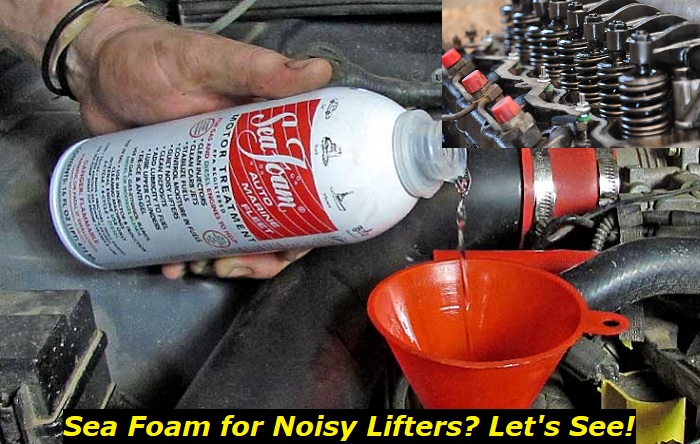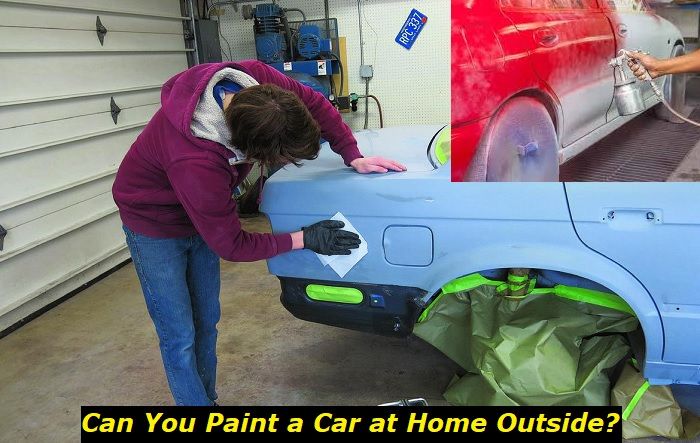Do you hear a tapping or a ticking noise coming from under your hood? Does the ticking occur constantly or randomly? Both of the two variants can indicate the same thing - you most probably have noisy car lifters. As is the case with most hydraulic and mechanical car problems, there's a solution for this one as well!
Lifter additives highlights
- Efficiency:close to zero
- Availability:limited number of products
- Average price: $65
- Way to use:add to engine oil
- DIY use:yes
- Experts' advice:no positive advice
- Independent testing:negative testing results
- Consequences:spoiling of oil properties, engine damage in the long run, no effect on lifters

Why do valve lifters make noise?
That loud annoying ticking noise is most often produced by none other than your valve lifters. It can occur due to several problems. First of all, you might have some dirt hiding in the engine oil, or it might be that your oil levels are generally low.
You will also hear this sound when you've got an oil leak, so be sure to check for that. Something is definitely clogged or dirty. Worst case scenario - the lifters are damaged and you have to buy some new ones.
Quiet down your car engine
Getting rid of that ticking noise might be as easy as changing the oil, so that should be the first thing to do. Simply flushing out the engine and getting rid of all of the old and stagnated oil inside before adding the new dose will do wonders.
When putting the new oil in make sure to know exactly what type of oil your manufacturer assigned to your engine.
After you've taken those steps, you should let your car run for an hour or so because the oil needs time to work its way through the car system. If in fact, the problem has been the oil it should run smoother now.
What is Sea Foam?
Sea Foam is a product made for fuel motor treatment. Its main purpose is to clean the internal parts of the engine and remove any tar, nasty old oil, or carbon that might have gotten stuck there.
It goes without saying that the fuel system can get congested as well. For example, the carb jets can mess with the hydraulic valves and the pistons that are inside the cylinder. This can cause the engine to suffocate.
Sea Foam is a product that has been on the market for a long time and with great performance and reviews! Over the course of the last six decades, they have been the most trusted brand for engine cleaning.
BUT!!! We don't recommend using sea foam as a DIY method to repair your engine or bring it back to life. This is not a magic liquid, this is just a chemical product that can do both good and bad! Remember this and don't rely on sea foam too much!
How does Sea Foam work?
Sea Foam is made from petroleum and it helps with cleaning out your car's fuel injectors and carburetor passageways. However, this is not the only thing that Sea Foam does. It also cleans your intake valves and oils up the engine cylinders!
It can be used in gas, blends, diesel, or biodiesel blends, and it will help your engine run cleaner and smoother.
The Sea Foam method of cleaning can be applied in three ways: in the fuel, in the crankcase, and on the top end.
How does Sea Foam work in fuel?
In fuel, Sea Foam works to lubricate and clean critical engine parts from any form of carbon. Sea Foam will clean your fuel injectors, intake valves, chamber areas, compression rings as well as carburetor passageways.
One container of Sea Foam can be mixed with up to 60 liters of fuel when poured into the fuel tank. To be more exact, one "oz" of Sea Foam per gallon that your vehicle holds. It's good to note that if you have a diesel engine it will also serve as a de-icing product due to its properties.
To put the Sea Foam in the fuel tank, you just open it and pour it down, yes, it's as easy as that. But keep in mind the fuel-foam proportion mentioned above!
After you've put the desired amount of Sea Foam in your fuel tank the only thing left to do is to drive it until it runs out and it will basically throughout that process clean everything that it needs to clean.
How does Sea Foam work in crankcase oil?
In the crankcase oil, Sea Foam works to liquefy heavier oil forms and deposits. When mixed with the oil and poured inside the crankcase it will dissolve the clogged carbon residues, remove old oil, as well as fix the noisy lifters and make them run smoothly again.
One container can treat up to 15 liters of oil, almost enough for two vehicles. However, the best way is to add some of the product between 500 and 1000 miles before the next oil change. After you've finished changing your oil you can then add the rest of the product.
There is no philosophy behind this but a simple manner of making sure it's clean in the best way possible. The first portion of the product will get all those big and nasty things out of the way while the second addition will ensure that the things are nice and neat.
How does Sea Foam work on the top end?
After adding some Sea Foam to your fuel tank and crankcase it's time to clean the top end. You need to get the aerosol Sea Foam Spray in order to do this properly. Sea Foam Spray is also petroleum-based so it will not harm anything on the upper end of the engine.
This aerosol will go into the intake manifold through the throttle body. Firstly, you will need to remove the intake hose from the air box to the throttle body, and then you will need to spray the whole contents of the can in the engine while it's running at 2,000RPM.
However, you need to get the engine pre-heated for this. Don't forget to run the vehicle so that your engine can be properly warm, before starting the process. After you've sprayed the entire contents of the product you should want to shut your car off and let the product wet soak inside of the intake manifold.
After about fifteen to twenty minutes, you should fire up your engine again and let it burn through the substance.
Another thing to note is that the smoke will come out of your tailpipe which is absolutely normal, no need to panic about it. The smoke will usually be blue in color due to the petroleum used in the product itself. Again, don't freak out, because it will not damage any of the top-end components.
Conclusion
Hopefully, by now, you've managed to figure out how to do a Sea Foam treatment on your vehicle. After following the steps and applying the methods we've discussed so far, along with the Sea Foam treatment, there will be no more popping or ticking sounds of any kind.
After everything has been cleaned out, your engine will run and breathe a lot smoother and your car will be grateful to you, you will most definitely feel the change!
It goes without saying that you should take your vehicle to regular maintenance and routinely change your oil so that you can prevent these problems in advance.
About the authors
The CarAraC research team is composed of seasoned auto mechanics and automotive industry professionals, including individuals with advanced degrees and certifications in their field. Our team members boast prestigious credentials, reflecting their extensive knowledge and skills. These qualifications include: IMI: Institute of the Motor Industry, ASE-Certified Master Automobile Technicians; Coventry University, Graduate of MA in Automotive Journalism; Politecnico di Torino, Italy, MS Automotive Engineering; Ss. Cyril and Methodius University in Skopje, Mechanical University in Skopje; TOC Automotive College; DHA Suffa University, Department of Mechanical Engineering






Add comment